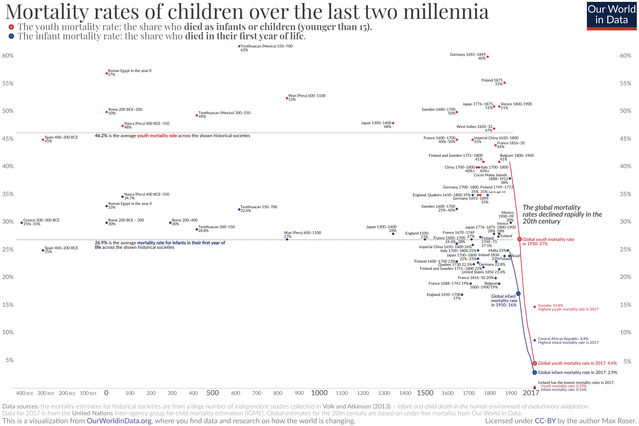Happiness
The Purpose and Problem of Suffering
While suffering is part of life, much of it is exaggerated and unnecessary.
Posted January 25, 2022 Reviewed by Abigail Fagan
Key points
- Suffering serves a purpose and has roots in our evolutionary heritage.
- There are two types of suffering. The first level of suffering is part of our human condition, and we can't do much to change it.
- The second level of suffering is more insidious, pervasive, and harmful than the first. We can take action to reduce this type of suffering.
"Pain is inevitable. Suffering is optional." —Quote of unknown origin
We have suffered quite a bit over the past few years. Some people in this world, sadly, have suffered more than their fair share, and our hearts should go out to those folks. The unfortunate truth of life is that it is not fair. While I'm not a Buddhist, there is much to be appreciated and learned about how to deal with suffering from Buddhist philosophy and psychology. Perhaps you've run across the Four Noble Truths of Buddhism somewhere:
- Life is suffering
- The cause of suffering is desire
- The cause of desire must be overcome
- When desire is overcome, there is no more suffering.
(You can listen to a podcast version of this post at The Reasonably Good Life here).
It seems pessimistic to start with a foundational tenant that "Life is suffering." Why not, "Life is beautiful"? Certainly, life can be beautiful, and we should practice gratitude for the many miracles and wonders that life has to offer. That said, another truth is that whether one is a pauper or a king, everyone suffers. Thus, we must learn to skillfully deal with the challenge of suffering, or it will undermine our ability to enjoy life.
Perhaps the Buddha was keenly interested in helping people with suffering because, when Buddhism originated around 2,500 years ago in India, there was much more suffering on the whole in the world than there is now. Although there is still tremendous suffering today and much room for improvement, the magnitude of suffering throughout most of human history is beyond reckoning. Deaths from war, disease, plagues, famine, and homicide were all much worse throughout the world than they are now. As but one example, throughout most of recorded history, about one-third of babies born didn't live to see their first birthday and almost half didn't live to see their 15th birthday.

At its core, Buddhism is a discipline for understanding the nature of suffering and transcending it (or at least much of it). In Why Buddhism Is True, journalist and Princeton professor Robert Wright makes a case for why a better translation of the First Noble Truth of Buddhism, "Life is suffering," might be "Life is unsatisfactoriness." Put another way, as Mick Jagger sang, we "can't get no satisfaction." At least, we cannot obtain and sustain satisfaction in any lasting way, but that would be a horrible song title.
From this Buddhist perspective, we suffer because we get caught in a perpetual state of pursuing wants and desires. When we don't obtain that which we desire, we suffer dissatisfaction. However, and this is key, even when we obtain that which we want and desire, we quickly adapt to whatever it is and return to baseline levels of happiness (or unhappiness). Thus, we return to searching for something else that will really make and keep us satisfied this next time around. In this way, we suffer for not getting what we want and from getting what we want. Constantly pursuing desires in order to achieve lasting happiness is a psychological dead end. It's as if we are trying to fill our buckets with the waters of happiness but we have holes in our buckets. Put another way, pursuing happiness is too often like chasing rainbows.
We can search within ourselves to see the truth of this. Take a few moments and think about your past wants and desires. Whether it is a new car, job, handbag, gadget, milestone for Instagram followers, etc. How long did your happiness last? We are happy for a short while, and then we return to our baseline level of happiness. Within Western psychology, this cycle of unsatisfactoriness can be viewed as the hedonic treadmill.
The Purpose of Suffering and Dissatisfaction
We could split hairs over the definitions of pain and suffering and how they differ, but this takes us down a rabbit hole. Let's just agree that there are some types of suffering that we must endure as part of being living creatures of this planet. It is part of the human condition. "Sh*t happens," as they say. This is as it must be.
Tapping into famed psychologist Abraham Maslow's Hierarchy of Needs, we suffer when we don't get our basic needs met for air, food, water, and shelter from the elements. We also suffer when we get injured, sick, fired from our jobs, and we experience deep pain and loss when loved ones die. Let's call this type of inevitable suffering Level 1 Suffering. In the quote at the beginning of this article, Level 1 Suffering is the "Pain is inevitable" portion.
On a very fundamental level, we need to experience various types of suffering. Suffering is not only functional, it serves the greater good! The roots of suffering are grounded in our evolutionary heritage. Suffering motivates us to move away from things which can cause us harm whereas pleasure and happiness help us move toward things that are good for us.
As a simple example, we feel ill when we eat rotten food because it could kill us. In contrast, a ripe apple tastes good to us, and we take pleasure in eating it, because they are a healthy source of energy that can help us survive. Similarly, healthy relationships tend to make us happy because strong social bonds are necessary for our survival. In contrast, rejection and bullying are painful to us, in part, because they motivate us to try not to let those things happen. Historically, rejection by our tribe could mean death so the pain of relationships going wrong motivates us to avoid or fix those problems when we can.
When we experience various types of happiness or suffering, we tend to return back to our baseline levels of happiness rather quickly. This is that hedonic treadmill. However, when we reflect upon this, this makes perfect sense and, once again, is rooted in our evolutionary heritage. If the dinner that we ate last Friday gave us long-lasting happiness, we wouldn't have a good reference point for evaluating whether our current lunch is good or bad. Similarly, if the stomach bug we had a year ago continued to make us feel bad after we had recovered, it would be difficult to know what our current health status is.
The Problem of Suffering
We are fortunate to live in a world in which we benefit from the miracles of modernity. These include indoor plumbing and flushing toilets, easy access to clean water, electricity, air conditioning and heating, antibiotics, vaccines, an abundance of food, democracy, civil rights, women's rights, and so on. In this way, we endure fewer pains of life (Level 1 Suffering) than any previous generation in the history of the world.
Often we can do little about Level 1 Suffering because this type of suffering is part of the human condition and evolutionarily necessary for our survival. Yet, there is another level of suffering that, especially in today's world, is perhaps more pernicious and pervasive than Level 1 Suffering. We can call this Level 2 Suffering, and it relates to the "Suffering is optional" from the above quote. While Level 2 Suffering is often related to Level 1 Suffering, there is much we can do to reduce it. This is the topic of my next post, so I hope that you will join me for that exploration!




